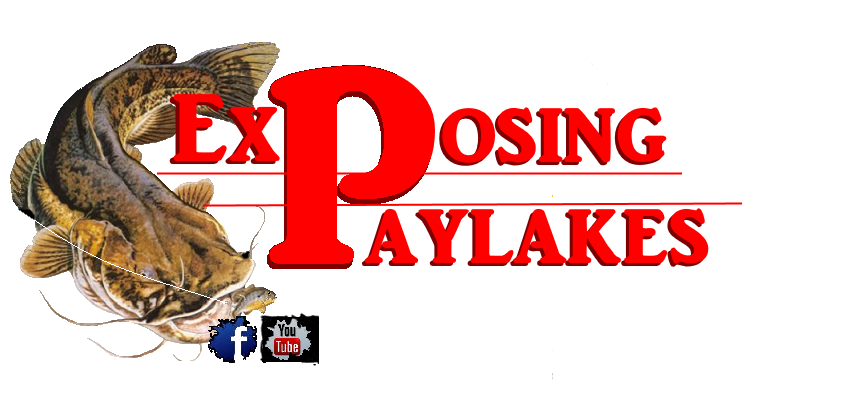What is a Paylake?
Paylakes have been a mainstay in the Midwest for generations. Typically, a paylake is a small pond stocked with catfish. Patrons pay for a set amount of fishing time at the lakes bait house. The bait house normally carry's fishing gear, food, drinks and of course - bait. For the longest time paylakes were a place for father and son to bond catching/keeping eater size, FARM RAISED catfish.
Somewhere in the mid 90's the paylake "model" began to change. It became more about who has the largest catfish and what cash prizes can be offered to patrons for catching them.
You see, large catfish are anywhere from 10 to 30 plus years old. Paylakes and fish farms CANNOT simply grow these large catfish. So they HAVE to stock the large RIVER grown catfish.
So, in order for most paylakes to compete with the new paylake business model. They must offer patrons the opportunity to catch trophy size catfish netted out of local RIVERS, as well as cash "pots", of which patrons can opt to pay into. As social media evolved, as did the paylake popularity. These paylakes used the power of Facebook to promote their large RIVER catfish stockings, as well as their cash pots offered. This would also leave Exposing Paylakes the opportunity to utilize our social media, to show the unknowing anglers, the overharvest of the public's trophy river catfish, for private gain.
On top of this continued overharvest. These shallow, stagnate, overstocked ponds offer a habitat of poor water quality, extreme summer water temps, near complete winter freeze and high mortality rates. Of course, this isn't even considering that these paylakes need "their" fish to be caught. Therefore most typically don't provide sufficient food sources, besides whats on a hook. Compile that with patrons catching the same fish over and over, patrons snagging fish, and juicing of the paylake. For these reasons, paylakes must continually stock these large river catfish.
That's where commercial fishing steps in. To meet the public's ever-growing demand to catch these large catfish. There must be a way to easily/quickly gather such fish. As mentioned above, these fish cannot just be grown. It takes too long and costs too much. So setting large amounts of commercial nets in OUR rivers is there best option. Of course, that requires a commercial fishing license. Some paylakes simply contract commercial fisherman to do the netting. Others choose to buy the license and gear and do their own netting. Regardless, this practice has severely affected the catfish populations of some rivers systems. Particularly ones with relaxed, or no regulations on commercial fishing, such as, but not limited too, the Ohio River.
Our mission here is simple. Spread the word to the unknowing fisherman, media, general public, and lawmakers. It's our belief if they understood the situation. Most would choose to help with our cause to preserve an extremely popular and valuable natural resource. Catfishing is the fastest growing form of freshwater fishing and trophy catfish are our rivers best defense against invasive species, such as Zebra Mussels and Asian Carp!




.jpg)